-
Experts, engineers gather to contribute to DARPA’s Plan X
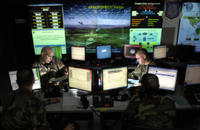
DARPA’s Plan X will attempt to create revolutionary technologies for understanding, planning, and managing DoD cyber missions in real-time, large-scale, and dynamic network environments; Proposers’ Day dialogue cements program approach
-
-
Twenty-year anniversary of U.S. last full-scale nuclear test
The first U.S. nuclear test, code named Trinity, took place in southern New Mexico forty-seven years earlier, on 16 July 1945; in all, the United States conducted 1,030 nuclear tests – the last one, code-named Divider, took place twenty years ago, on 23 September 1992
-
-
Hezbollah drone represents changing technological landscape for Israel
Israel’s air defenses worked just fine in handling the drone launched by Hezbollah last week: the drone was picked up by Israeli surveillance as it was launched from southern Lebanon, then tracked as it flew south over the Mediterranean; it was allowed to enter Israeli air space so that after it was shot down, its remains could be collected and analyzed; still, the incident made many Israelis sit up and take notice; Israel, a country which has pioneered the use of UAVs as an integral part of military operations and which has held a monopoly on operating drones in the region, was forced to realize that is adversaries, too, now had access to the technology
-
-
Worries about UAV use in both military and domestic missions exaggerated

Dr. Steven P. Bucci, a Senior Fellow for Homeland Security & Defense Issues at the Heritage Foundation, talked with Derek Major, the Homeland Security News Wire’s executive editor, about the growing use of UAVs in both military and domestic law-enforcement missions; Bucci says that in targeting militants, American drone operators exercise a great deal of care to minimize, and eliminate if possible, death and injury to innocent civilians; he also says that the use of drones in domestic law-enforcement missions, if done properly, will not pose Big Brother risks, because drones may make surveillance easier and cheaper, but it will not give law-enforcement agencies any new authorities
-
-
DARPA seeking tools for identifying hidden explosives at standoff
The threat to U.S. soldiers from improvised explosive devices (IEDs) is as varied as the makers of IEDs are resourceful in how they design and conceal the explosives; interdisciplinary teams needed to develop proof-of-concept demonstrations of technology for identifying presence of embedded explosives in opaque, high-water-content substances
-
-
Mice genetically modified to detect landmines

In another advancement in explosives detection, scientists have genetically modified mice to enable them to sniff out landmines; the GM mouse, known as MouSensor, may one day become a significant tool to help deal with the dangerous legacies of past wars
-
-
Sequestration-related defense budget cuts in 2013 to increase from $50.5 to $60.6 billion

Defense contractors are already worried about $50 billion dollars which would be cut from the defense budget on 3 January 2013 if the White House and Congress fail to reach an agreement on a deficit reduction plan; budget analysts point out that due to a provision in the Budget Control Act, another $10 billion will be added to that amount, bringing the total in defense cuts in 2013 to $60.6 billion
-
-
Design competition for next generation ground vehicle opens
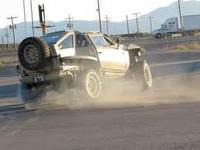
DARPA is calling on innovators with expertise in designing and engineering drive train and mobility systems collaboratively to design elements of a new amphibious infantry vehicle, the Fast, Adaptable, Next-Generation Ground Vehicle (FANG);the winning team will be awarded a $1,000,000 cash prize and will have its design built in the iFAB Foundry
-
-
New study challenges assumptions on wartime sexual violence
A new study, released the other day at the UN headquarters in New York, finds that there is no compelling evidence to support a host of widely held beliefs regarding wartime sexual violence
-
-
GOP lawmakers advise defense contractors to issue sequestration-related layoff notices
The Worker Adjustment and Retraining Notification Act requires that an employer who employs more than 100 employees must provide a 60-day advanced notice to employees of mass layoffs or the closing of a plant; if the act is not followed, employees can sue for back pay and benefits for up to sixty days; the Obama administration advised defense contractors that they should not comply with the act, even in the face of the 2 January 2013 $500 billion cut in the defense budget which would go into effect if no deficit reduction agreement is reached; if contracts are cancelled and mass lay-offs ensue, the administration said it would cover the defense contractors’ non-compliance-related legal costs; Republican lawmakers say they would block any payments to cover such non-compliance, and advised defense contractors that they should follow the law
-
-
U.S. Navy tests the second of two railgun prototypes
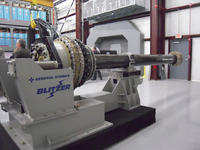
The EM Railgun launcher is a long-range naval weapon that fires projectiles using electricity instead of traditional gun propellants such as explosive chemicals; magnetic fields created by high electrical currents accelerate a sliding metal conductor, or armature, between two rails to launch projectiles at 4,500-5,600 mph; the Office of Naval Research’s Electromagnetic (EM) Railgun program is evaluating the second of two industry railgun prototype launchers at a facility in Dahlgren, Virginia
-
-
New launch and recovery system for the Scan Eagle UAV
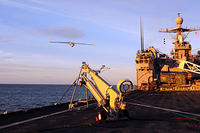
A shipboard-capable system designed to support both the launch and recovery of the Scan Eagle UAV successfully completed final demonstration flight testing on 27 September at a testing range in eastern Oregon
-
-
Defense firms growing anxious about sequestration-related defense cuts
Defense contractors are growing anxious as they still do not know whether $500 billion in defense cuts will take place on 1 January 2013 as a result of sequestration; many firms are hoping that the administration and Congress will come to a budget agreement once the election is over, but at the same time, it is something contractors cannot rely on; what complicates the issue is the Worker Adjustment and Retraining Notification Act (WARN), which requires employers with more than 100 employees to give employees a 60-day notice before mass lay-offs or plant closure
-
-
Fueling UAVs in flight
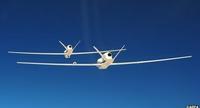
DARPA completes close-proximity flight tests of two modified RQ-4 Global Hawk unmanned aerial vehicles, demonstrating technology enabling autonomous aerial refueling
-
-
Hezbollah drone shot down over Israel
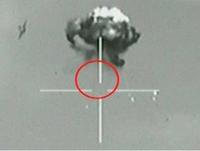
The Israel Air Force (IAF) planes shot down a UAV over the north Negev; the UAV entered Israeli air space from the west, but Israeli intelligence says the drone was launched by Hezbollah in Lebanon, then made its way south over the Mediterranean, then turned east when it reached the water off the Gaza Strip
-
More headlines
The long view
Bookshelf: Smartphones Shape War in Hyperconnected World
The smartphone is helping to shape the conduct and representation of contemporary war. A new book argues that as an operative device, the smartphone is now “being used as a central weapon of war.”
